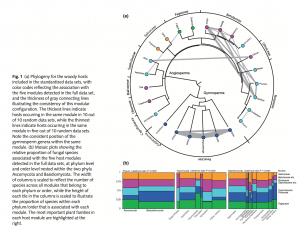Citizen science and the evolution of wood rotting fungi
Data from the Danish fungal atlas database, which was collected by citizen scientists, was used to examine the evolution of fungi on wood.

Citizen science and the evolution of wood rotting fungi
Heilmann-Clausen, J., Maruyama, P. K., Bruun, H. H., Dimitrov, D., Laessøe, T., Frøslev, T. G., and Dalsgaard, B. 2016. Citizen science data reveal ecological, historical and evolutionary factors shaping interactions between woody hosts and wood-inhabiting fungi. New Phytol.
Data from the Danish fungal atlas database, which was collected by citizen scientists, was used to examine the evolution of fungi on wood. Heilmann-Clausen et. al. examined citizen science data from Denmark in order to gather data to test a hypothesis about fungal host selectivity of wood dwelling fungi. After correcting for sampling bias, phylogenetic signal of host species was tested using Pagel’s lambda and one-way regression models were used to assess associations with fungal species richness. Strength of modularity was assessed in relation to host phylogeny. There was significant phylogenetic signal for host trait variables of maximum height (m) and wood density.

Fungal species richness was positively influenced by wood pH. Modularity analysis suggested that fungal community structure differed between angiosperms and gymnosperms and that fungal orders rich in endophytes had the greatest selectivity for modules. For example, they linked the modularity of the ascomycete orders Helotiales (common on gymnosperms) and Diapthorales (common on angiosperms) to the divergence of fungi and plant species in the carboniferous period. They concluded that woody plants have phenotypic filters that select for certain fungi from a large species pool.



 Print
Print Email
Email



